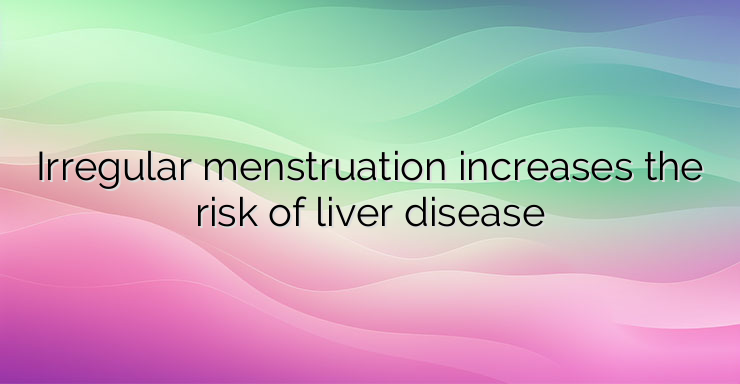It has long been known that women with irregular menstrual cycles are at increased risk of diabetes or heart disease. A new study published in the journal The Endocrine Society has shown that they are also at risk of developing non-alcoholic fatty liver disease. Non-alcoholic fatty liver disease is about to become a major public health problem due to late diagnosis. It is estimated that 25% of the population may be affected by this disease, but most cases go undiagnosed. This disease can be prevented initially with an appropriate lifestyle, but if it progresses, it can lead to cirrhosis or liver cancer. Timely treatment is key, but early diagnosis is not easy because it does not present with symptoms and routine tests do not easily detect it. The fact that women with irregular periods are more likely to have liver disorders is a signal to establish preventive measures in this risk group. Physical activity and diet are the best strategies for treating the condition, as there are no specific medications approved for fatty liver. What is the connection between irregular periods and fatty liver? This study is the first to find a link between long or irregular menstrual cycles and non-alcoholic fatty liver disease. This connection is not explained by obesity, the scientists explain. The study was conducted with the participation of 72,092 women under the age of 40. At the start of the study, about 28 percent of the participants had long or irregular menstrual cycles, and 7 percent had nonalcoholic fatty liver disease. The researchers followed the participants four years later and found new cases of fatty liver in almost 9 percent of the women. Through a thorough case analysis, they concluded that there is a link between long or irregular menstrual cycles in young women and an increased risk of fatty liver. Risk factors for fatty liver Non-alcoholic fatty liver disease occurs when abnormally large amounts of fat are deposited in the liver, which can lead to inflammation. If left untreated, the condition can lead to cirrhosis and liver cancer. It also increases the risk of heart disease. The factors that increase the risk of fatty liver are well known: Type 2 diabetes; Prediabetes – impaired glucose tolerance; Obesity; High cholesterol; High triglycerides; High blood pressure This new study suggests that irregular menstrual cycles are also another risk factor to consider. The role of estrogens The study did not delve into the mechanism linking irregular menstrual cycles to fatty liver, but the authors suggested that estrogen levels may explain the link. Previous studies have shown that low estradiol levels are associated with an increased risk of fatty liver. It was also foundthat estrogen replacement therapy alleviates this liver disease. Regular menstrual cycles favor optimal estrogen levels. Estrogens reduce inflammation, oxidative stress and insulin resistance, which would also explain why they reduce the risk of fatty liver. However, when periods are irregular, estrogen levels are not optimal. Lifestyle Changes The American Heart Association states that fatty liver can be prevented by maintaining a healthy body weight, exercising regularly, eating a healthy diet, controlling diseases such as type 2 diabetes, and reducing high blood triglyceride levels. References: https://www.sabervivirtv.com/ginecologia/regla-menstruacion-irregular-riesgo-enfermedad-higado_7146?utm_source=instagram-stories&utm_medium=social&utm_campaign=trafico https://academic.oup.com/jcem/advance-article -abstract/doi/10.1210/clinem/dgac068/6539695?redirectedFrom=fulltext


Leave a Reply